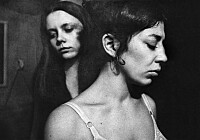READ MORE
-
Canon RF 75-300mm F4-5,6 - telezoom con poco peso en formato completo
El nuevo objetivo de entrada de Canon para quienes necesitan telezoom, pesa 507 gramos y mide 146 mm de largo.
-
Canon RF 75-300mm F4-5,6 - telezoom med lav vægt i fuldformat
Canons nye entry-level objektiv til dem, der har brug for telezoom, vejer 507 gram og er 146 mm langt.
-
Canon RF 75-300mm F4-5,6 - kevyt telezoom täyden kennon kameroille
Canonin uusi aloitustason objektiivi niille, jotka tarvitsevat telezoomia, painaa 507 grammaa ja on 146 mm pitkä.
-
Canon RF 75-300mm F4-5,6 - telezoom med lav vekt i fullformat
Canons nye innstegsobjektiv for den som trenger telezoom, veier 507 gram og er 146 mm langt.
-
Forscher entdecken neue Farbe - "olo" wurde noch nie zuvor erlebt
"Unübertroffene Farbsättigung", sagt jemand, der die Farbe mit dem Namen "olo" gesehen hat, die auf einem Bildschirm oder einem anderen Medium für das menschliche Auge nicht angezeigt werden kann.
-
Des chercheurs découvrent une nouvelle couleur - "olo" n'a jamais été perçue auparavant
"Saturation de couleur inégalée", dit une personne qui a vu la couleur nommée "olo", qui ne peut être affichée sur un écran ou tout autre support pour l'œil humain.
-
Forskere oppdager ny farge - "olo" har aldri tidligere blitt opplevd
"Uovertruffen fargemetning", sier en som har sett fargen med navnet "olo", som ikke kan vises på en skjerm eller annet medium for det menneskelige øyet.
-
Forskere opdager ny farve - "olo" er aldrig tidligere oplevet
"Uovertruffen farvemætning", siger en, der har set farven med navnet "olo", som ikke kan vises på en skærm eller andet medie for det menneskelige øje.
-
Tutkijat löytävät uuden värin - "olo" ei ole koskaan aiemmin koettu
"Vertaansa vailla oleva värikylläisyys", sanoo yksi, joka on nähnyt värin nimeltä "olo", jota ei voida näyttää näytöllä tai muulla välineellä ihmisen silmälle.
-
Investigadores descubren un nuevo color - "olo" nunca antes experimentado
"Saturación de color inigualable", dice alguien que ha visto el color llamado "olo", que no se puede mostrar en una pantalla u otro medio para el ojo humano.
-
The World's Largest Digital Camera Has Taken Its First Test Images
After two decades of development, the Large Synoptic Survey Telescope (LSST) has now taken its first 3.2 gigapixel test images for further analysis.
-
La cámara digital más grande del mundo ha tomado sus primeras imágenes de prueba
Después de dos décadas de desarrollo, el Telescopio de Estudio Sinóptico Grande (LSST) ha tomado sus primeras imágenes de prueba de 3,2 gigapíxeles para un análisis posterior.
-
Maailman suurin digitaalikamera on ottanut ensimmäiset testikuvansa
Kahden vuosikymmenen kehitystyön jälkeen Large Synoptic Survey Telescope (LSST) on nyt ottanut ensimmäiset 3,2 gigapikselin testikuvansa jatkoanalyysiä varten.
-
Verdens største digitalkamera har taget sine første testbilleder
Efter to årtier af udvikling har Large Synoptic Survey Telescope (LSST) nu taget sine første testbilleder på 3,2 gigapixel til videre analyse.
-
Verdens største digitalkamera har tatt sine første testbilder
Etter to tiår med utvikling har nå Large Synoptic Survey Telescope (LSST) tatt sine første testbilder på 3,2 gigapiksler for videre analyse.
-
Le plus grand appareil photo numérique du monde a pris ses premières images test
Après deux décennies de développement, le Large Synoptic Survey Telescope (LSST) a maintenant pris ses premières images test de 3,2 gigapixels pour une analyse ultérieure.
-
Die größte Digitalkamera der Welt hat ihre ersten Testbilder gemacht
Nach zwei Jahrzehnten der Entwicklung hat das Large Synoptic Survey Telescope (LSST) nun seine ersten Testbilder mit 3,2 Gigapixeln für weitere Analysen aufgenommen.
-
HeBF Handgrip - provides better ergonomics for Sigma BF
Accessory manufacturer Helium Design Lab is now releasing a "limited edition" grip for Sigma BF - created in aluminum to follow the camera's design language.
-
HeBF-kahva - parantaa ergonomiaa Sigma BF:lle
Lisävarustevalmistaja Helium Design Lab julkaisee nyt "limited edition" -kahvan Sigma BF:lle - luotu alumiinista kameran muotokielen mukaisesti.
-
Polaroid Flip - direktefilm-kamera med retrodesign & ny teknologi
Polaroid er i farten og lanserer nå et moderne direktefilm-kamera med innebygd blitz og retrodesign, med mulighet for appstyring.
-
Polaroid Flip - direktefilm kamera med retrodesign & ny teknik
Polaroid er i gang og lancerer nu et moderne direktefilm kamera med indbygget blitz og retrodesign, med mulighed for appstyring.





























































